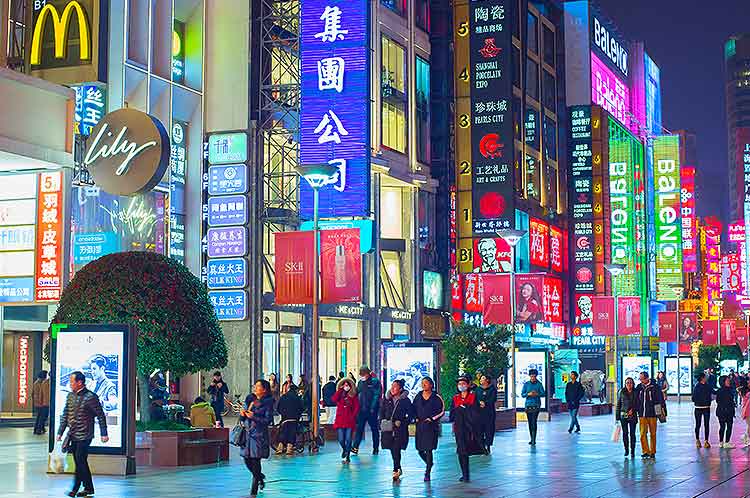January 3, 2019 Reading Time: 3 minutes
 Reading Time: 3 min read
Reading Time: 3 min readImage credit: joyfull/ depositphotos
Razeen Sally*
A new protectionist era began earlier this year, following a decade of stalled liberalisation after the global financial crisis, and unprecedented liberalisation and globalisation in the quarter-century before. US actions, especially tariffs aimed at China, have sparked tit-for-tat retaliation. Other developing countries are started to copycat this — note India’s recent imposition of import controls on balance-of-payments grounds. The World Trade Organization (WTO) is in existential crisis, with its dispute-settlement mechanism close to collapse.
The causes of this new protectionism are threefold: first, what has been until recently a depressed post-crisis global economy; second, an anti-globalisation backlash in the West (although not so far in the Rest); and third, China’s predatory industrial policies, which have spilled over into protectionism and distorted world markets.
In the short-term, protectionism will probably accelerate, especially in US-China relations, spilling over from tariffs to regulatory restrictions and sanctions on high-tech goods and services. More copycatting protectionism can be expected, starting with India, Brazil, Indonesia and South Africa. The WTO’s dispute settlement system may well collapse.
If this happens international trade will slow down markedly, and possibly derail the current global economic recovery. Trade uncertainty will dampen already low global productivity growth, making global growth prospects even bleaker. Global value chains will be disrupted and reoriented. Multinational enterprises will shorten and regionalise production networks. The big losers will be developing countries, especially smaller and poorer ones, which will lose labour-intensive niches as multinational automate production and concentrate on major national and regional markets.
What can be done to prevent this protectionist spiral?
Damage limitation is imperative, with two priorities. First, a US-China accommodation, or at least a truce, which would discourage others from more copycatting protectionism. Second, WTO reform of the dispute system, to persuade the US to remove its block on appointing new members to the Appellate Body.
These are crisis flashpoints, however, so there are no easy answers. If that damage limitation succeeds, what else might be done to revive a more liberal trading system?
First, governments must find ways to revive unilateral liberalisation, meaning bottom-up liberalisation outside of trade negotiations and trade agreements. Coupled with domestic market reforms, this was the motor of globalisation before the crash. This might seem unlikely in today’s climate. But constituencies with a strong stake in it — for instance multinationals, small and medium-sized enterprises plugged into global value chains, as well as cities and sub-national regions seeking to be magnets for investment — all have incentives to act.
Second, WTO rules need to be reformed to catch up with twenty-first century trade. Existing agreements should be strengthened, for instance on services, state-owned enterprises, subsidies and China’s market-economy status. New agreements are needed too, especially on digital trade and foreign direct investment. This can only be done in “coalitions of the willing,” meaning subsets of WTO members that account for the bulk of trade and investment. There are potential trade-offs and deals in sight, not least between the US and China. But it requires negotiating will, and about ten other WTO members (counting the EU as one).
Third, most free trade agreements actually will do little to liberalise trade. In Asia, the Regional Comprehensive Economic Partnership, if concluded and ratified, will be incremental. It is “trade-lite,” removing most tariffs but not tackling non-tariff barriers that are bigger obstacles to cross-border trade. China’s Belt and Road Initiative will make more of a difference — good and bad — to intra-Asian trade. The renamed Comprehensive and Progressive Agreement for Trans-Pacific Partnership is the one trade deal that would give trade a big boost, especially were the US to join at a future date. It is a “deep-integration” agreement, whose rules tackle regulatory barriers while also addressing new issues such as digital trade.
Finally, in an even larger frame, consider the link between trade, geoeconomics and geopolitics. A new era of competition between rival economic systems has begun. During the Cold War, the West faced off against the Soviet Union. Now the rivalry is between varieties of liberal-democratic, market-led capitalism, on the one hand, and authoritarian, state-led capitalism in China, on the other.
The rules of the game for trade in Asia will inevitably be shaped and reshaped by this new Great Game. Understanding how a new era of geopolitical competition can ruin or rescue our existing liberal trading system is now an urgent priority.
*Razeen Sally is a Visiting Associate Professor at the Lee Kuan Yew School of Public Policy at the National University of Singapore. The opinions expressed in this article are the author’s own and not the institutional views of LKI, nor do they necessarily reflect the position of any other institution or individual with which the author is affiliated. This article was originally published in the Asia in the World Economy Roundtable 2018 report.